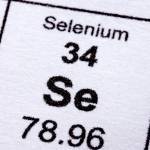What Is the Best Type of Selenium Supplement for Horses?

This study was conducted to evaluate how exercised Thoroughbreds digest and retain selenium from either sodium selenite or selenium-enriched yeast-supplemented diets.
The apparent absorption of selenite and selenium-yeast averaged 51.1% and 57.3%, respectively. Most of the difference in selenium retention was the result of increased selenium absorption since there was no difference in average daily urinary selenium excretion between the two supplemental sources. Following exercise, selenium excretion in the selenite group was significantly higher than during nonexercise days of the collection period. A similar increase did not occur in the selenium-yeast group. Urinary selenium excretion was lower in the selenium-yeast group compared to the selenite-fed horses on the day of exercise.
Both plasma and whole blood selenium increased post-exercise. Red blood cell selenium was similar between both treatment groups, and there was a trend towards a decrease in red blood cell selenium post-exercise. Plasma selenium remained elevated in both treatments 4 hours post-exercise. By 24 hours post-exercise, selenium of the selenite group had returned to pre-exercise levels, while plasma selenium from the selenium-yeast-supplemented group remained elevated. At this time, selenium-yeast plasma selenium was higher than the selenite group.
Increased urinary selenium excretion following exercise in the selenite group suggests that the requirement for selenium by exercised horses may be dependent on selenium source and exercise frequency. More research is needed to quantify the selenium requirement of horses at different exercise intensities and to determine how the form of dietary selenium affects antioxidant status.
This report of KER’s 1999 research was published in Proceedings of the 16th Equine Nutrition and Physiology Society Symposium.
Read the entire research paper, titled Effect of Selenium Source on Selenium Digestibility and Retention in Exercised Thoroughbreds.








